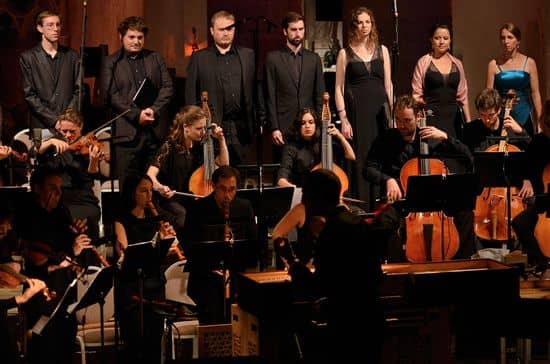Baroque Normandy
Great Norman motets
Did French baroque music only sound in Versailles? Certainly not! In the 17th century, music was everywhere in the kingdom: from the smallest chapels in remote areas to the cathedrals of the great cities, from the streets to the salons of the aristocracy, from village squares to royal residences. Gregorian chant was the primary music of all services, and street song was certainly the most widespread secular genre. However, the contemporary music of the time, the finest of musical creation, was not limited to the closed walls of the royal palaces.
So, who did we meet in Normandy during the 17th century who would have left his mark on the history of music? If the “known” composers are more linked to the Age of Enlightenment (Brossard in particular), in the 17th century, several prominent personalities are closely linked to Normandy. It is no longer a question of knowing who was born there (one rarely chooses), but of knowing who really worked there and who the Normans of the Grand Siècle really heard.
Marc-Antoine Charpentier was a leading personality, not to say the greatest composer of his time, and was protected by Marie, Duchess of Guise and Joyeuse, Princess of Joinville. The princess, who remained unmarried after her return from exile in Italy, gathered around her a group of literary figures, high-flying intellectuals, art lovers, and music enthusiasts. Following a terrible bereavement (the death of little François Joseph de Lorraine, the last heir of the powerful House of Guise, at the age of 5), Mlle de Guise became close to the mother of the deceased child, her sister-in-law Elisabeth d’Orléans, Duchess of Alençon and first cousin of Louis XIV, known as Mme de Guise. The stays in Alençon were regular (Mme de Guise spent six months of the year there), and it is known that a whole court moved to these Norman quarters. Several works by Charpentier would have been commissioned, including Litanies de la Vierge and probably secular entertainments, on the occasion of these Norman residences, and performed in Alençon itself by the musicians of the Guise. Like that of the king, the music of Mlle de Guise was attached to his person and not to a place: it was therefore obliged to follow his movements, in the same way as all the servants of the house. Thus, in the same way as the numerous paintings that Mme de Guise commissioned for her private mansion in Alençon (which she bequeathed to become a hospital), the regular presence of this princess brought in its wake a series of ad hoc musical creations of which Charpentier was the great organizer.
The other major composer linked to Normandy was Henry Dumont. Born in Belgium in 1610, his career developed mainly in Paris. Passionate about Italian music, and after studying in the Netherlands, he was recruited by the parish of St. Paul in the Marais in Paris. He was quickly noticed there, and his career continued at the court where he totally renewed, with Pierre Robert, religious music. Inventor of the grand motet à la française, which influenced Lully and Lalande, he produced a series of works for the royal chapel that left a lasting impression on history. On the occasion of his retirement, King Louis XIV offered Dumont a royal edition of his entire repertoire.
He was also very active in contributing to the repertoire of the abbeys of nuns. It was through this means that the king’s composer discovered Normandy: the Premonstratensian abbey of Notre-Dame de Silly-en-Gouffern was granted to him in commendation in 1667, along with a substantial income. He was to follow the management of the abbey quite closely, visiting it regularly and contracting with its procurators. He also received from the king a pension taken from the revenues of the abbey of Saint-Évroult, also in the Orne and now in ruins.
Finally, two prominent composers, although they have since lost their fame, were active in Normandy throughout their careers. The first is the organist Jacques Boyvin, who was appointed to the prestigious gallery of Rouen Cathedral, previously occupied by the master Jehan Titelouze. A great connoisseur of organ building, he supervised the creation of a new instrument for the cathedral and was one of the few in the 17th century to leave rules for registration: that is, the combination of the different registers of the instrument. His organ books are among the masterpieces of the French organ school. We will give here transcriptions made for viols, in accordance with the contemporary tradition.
The last man in this program, and probably the most forgotten despite his major talent, is Louis Le Prince. Born in 1637 in Ferrières St Hilaire in the Eure, he was active in Lisieux throughout his career. He left a magnificent 6-part mass, representative of the 17th century cathedral style, and of great contrapuntal richness. The music recreated a few years ago will be given again here in its original form giving to hear the great hours of the Cathedral of Lisieux.
